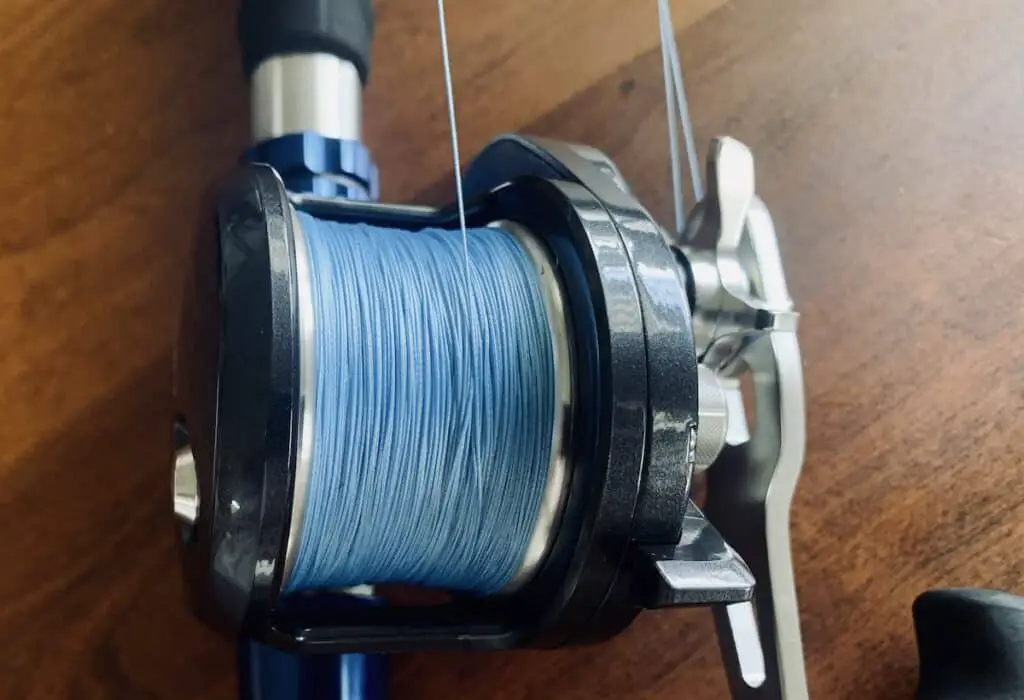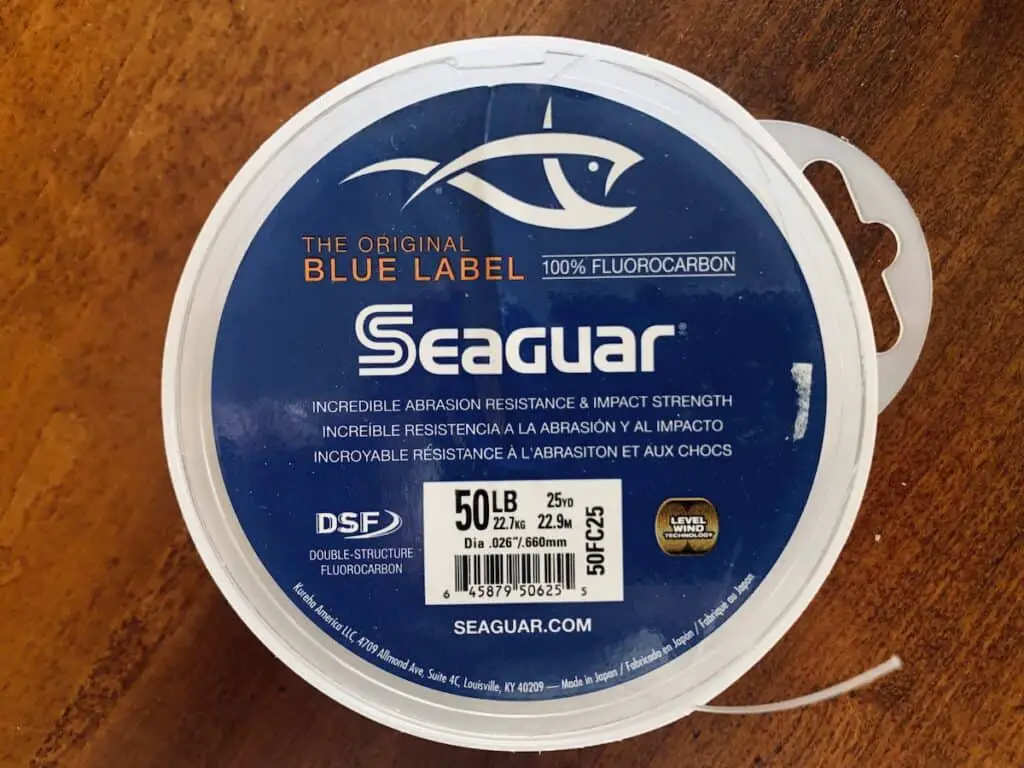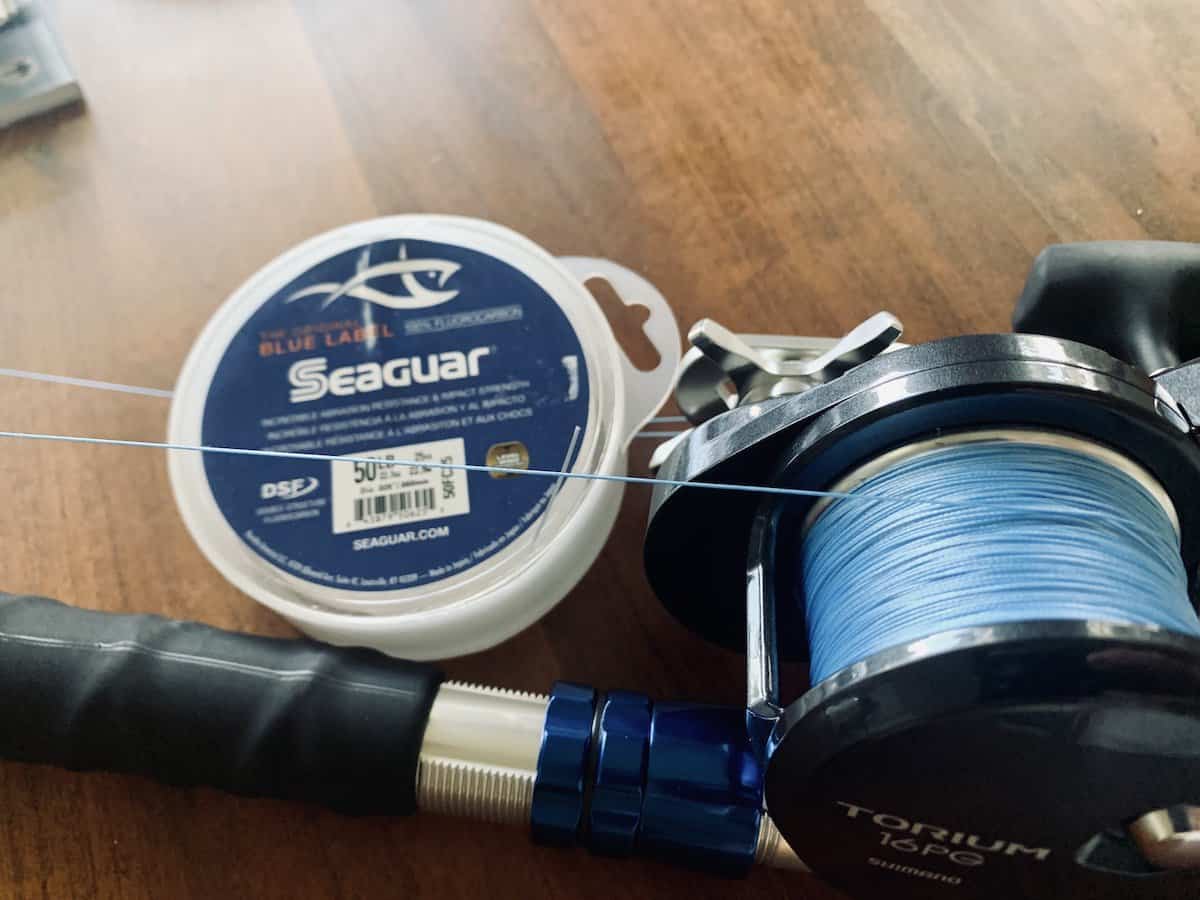Bottom fishing is a technique that requires a skilled angler to feel a strike and quickly prevent the fish from retreating back into the reef. The boat captain must also be skilled in locating fish on sonar and getting the boat in proper placement to drift over a reef or wreck. Bottom fishing typically uses live or cut bait and doesn’t usually require the angler to work the rig extensively.
Anglers need to have terminal tackle of the appropriate weight and enough line capacity in the reel to reach bottom at a variety of depths. Anglers also need to be able to feel when the sinker makes and loses contact with bottom, so a high sensitivity line is best.
When bottom fishing, boat captains will either anchor up or position the boat up current of a reef, wreck, or other structure and drift over it. It requires a skillful captain to get the boat in the right location and angle it in such a way that the boat drifts over the reef with the current and multiple fishermen can hang lines off the side to catch the bottom dwellers below. To learn more about bottom fishing techniques, read my article Bottom Fishing: Everything You Need to Know.
Several lines need to drop at a similar pace to avoid tangles, and most of them will have something like a 3 way drop rig with live bait on it. The rigs need to have leader lines long enough to provide abrasion resistance, but not so long that they become too easily tangled with other lines. It's a tricky issue that’s rarely seen with other fishing techniques.
The conditions seen in bottom fishing necessitate using braid for a main line and monofilament or fluorocarbon for a leader line. A fluorocarbon leader is best for leading to a live bait and a monofilament leader is best for leading to a sinker. Read on to learn more details about fishing line qualities and how to use them for optimum performance in bottom fishing.
Braided Main Line is Best for Bottom Fishing
When choosing a main line for bottom fishing, consider the features you need most. You’ll need to be able to reach the bottom with enough margin for the fish to fight a bit. You’ll need to be able to feel a strike right as it happens hundreds of feet down.
Grouper are known to burrow into reef structure right after a strike. The fisherman can quickly lose the advantage in the fight if the grouper burrows itself deep enough and succeeds and breaking off the line. The angler needs to be quick and the line needs to be strong enough to handle the shock of a strike followed by a rapid retrieve.
There are two types of fishing line that are commonly used for a main line: braid and monofilament. Fluorocarbon is rarely used as a main line due to its high cost. When comparing braid and monofilament, more yards of braid can fit on a reel than monofilament of the same pound test because of braid’s much smaller diameter.
In some applications, the larger diameter of monofilament is acceptable. For example, when trolling with a heavy duty rod and reel that remains in the rod holder for the entire fight. In bottom fishing however, the rod and reel are usually held and so a more compact setup is desirable. Anglers nowadays will choose smaller size reels and spool them with braid to get sufficient line capacity without adding so much bulk to the setup.
Along with line capacity, the main line for bottom fishing needs transmit the feel of a strike through hundreds of feet of line. Braid is considered highly sensitive and will transmit the feel much better than monofilament.

Braid can cut through water easier with its small diameter, which helps transmit the feel by keeping the line nice and taut. Monofilament stretches, sinks slowly and has a tendency to bow out on its way down. This causes extra line length to be let out and dampens the feel of the bites.
Bottom fishing demands the use of heavy tackle. The strength of the gamefish will put your tackle to the test. When bottom fishing around reefs and wrecks offshore or nearshore, I opt to spool my reel with 65 lb test braid. When the water is over 300 feet deep, and I’m targeting big grouper, I might go up to 80 lb test. When bottom fishing, there is little downside to choosing a heavier lb test line.
Fishermen learning to get into offshore bottom fishing tend to be unsure of how much line capacity is really enough. I highly recommend taking a look at the depth charts for the water you’ll most frequently fish in. I decided on my size 16 Talica 2 speed reel because most of the waters I’ll fish in near me in Melbourne, FL are under 250 feet deep (about 83 yards). The Talica 16 holds 485 yards of 65 lb test.
I would add about 100 yards capacity for comfort and the additional capacity of the reel gives me the ability to fish deeper waters occasionally without buying a big and bulky reel. Also, keep in mind that the reel manufacturers must be the tightest spoolers on earth because I’ve never been able to fill a reel with the listed capacity on any reel I have, no matter who the manufacturer is.
I have been using PowerPro Spectra Braid for years and highly recommend it. Tackle Direct carries a high variety of line strength and colors, click here to check it out on their website.
Leader Lines For Bottom Fishing Rigs
Leader line is one of the most important things when bottom fishing. The leader is the piece of line between the bait and main line or the sinker and main line. The purpose of the leader is to provide a natural presentation of bait while also protecting against breakoffs on the harsh structure it will inevitably come in contact with.
Monofilament and fluorocarbon are the main choices of leader line. Braid is rarely used as a leader line because it does not provide much abrasion resistance. Mono and Fluoro provide similar amounts of abrasion resistance, but differ in other qualities. Fluorocarbon is best on the leader line connected to live bait and monofilament is best on the leader line connected to a bank sinker.
Fluorocarbon is much more expensive, which can be a drawback when considering it for a long leader length. Most of the time, bottom fishing rarely has a leader over 30 feet long, so the cost difference isn’t such a big deal for bottom fishing leaders.
Leader Line to Live Bait
Fluorocarbon provides the most natural presentation because it is essentially completely invisible in the water. Fluoro is a great choice on the leader that ties to a live bait. As long as the angler is using an appropriate bottom fishing rig, the bait will be allowed to move freely and naturally near the bottom with an invisible leader. After all your hard work getting live bait and rigging it up, fluorocarbon is a great way to maximize its effectiveness.
Live bait is most commonly rigged with a 3 way drop rig or a hi/low rig. In this rig, the main line braid is tied to a 3 way swivel and there is one leader line which contains the hook and live bait.
Most likely, you’ll be using a circle hook in size 7/0-9/0 for bottom fishing. The circle hook should likely be non-stainless steel because of most gear regulations regarding reef species. In my article Bottom Fishing Hooks, I go into detail about how to choose the best hook for bottom fishing and the different gear regulations for different areas.
Another leg connected to the 3 way swivel leads to the bank sinker. A hi/low rig does essentially the same thing with one additional leg up higher in the water column to hold a second live bait.
I have written an entire article dedicated to learning about the best bottom fishing baits, how to catch them, and how to use them, here.
Fluorocarbon is commonly used for the leader to live bait on a 3 way drop rig. The line strength of the leader depends on the conditions. When working around a wreck, I expect a lot of impact with structure and will usually opt for 80 lb test. When working a softer drop off, I might go with a 60 lb test leader. Seaguar Blue Label is my go-to fluoro leader line.

The length of the fluorocarbon can also vary based on conditions. These conditions can include consideration about other anglers on the boat. If you’re on a small boat with several lines out, it may be wise to shorten the leader to about 5 feet to avoid tangles. If you’re on a party boat with plenty of space between you and the next fishermen, a longer length, like 10-15 feet is likely ok.
The longest length you can manage (within reason) is always preferable for a natural presentation. Just make sure you don’t make it so long that your live bait ends up hanging out much higher in the water column than you were intending.
I recommend choosing monofilament as the leader on the portion of leader that connects to the bank sinker. An invisible line and natural presentation is unnecessary here since it doesn’t hold the hook and bait on a 3 way drop rig. I’d opt for a heavy line strength, like 80 lb test, to provide maximum resistance against all the contact with structure it’ll experience.
The length of leader to the bank sinker will determine how close to bottom your live bait stays. This can vary based on the size of the reef or wreck you’re fishing, and I usually start with something like a 5-10 ft length. I always store a variety of fluorocarbon leader line strength spools on the boat in case it gets bit off or I want to change the strength or length.
Leader Line to Cut Bait
A knocker rig is commonly used with cut bait. In a knocker rig, the leader is connected to the main line either with a knot or swivel, and an egg sinker is put on the leader and allowed to knock into the hook eye. The cut bait is put directly on the hook eye. The egg sinker can slide up and down the leader but should always stay on the bottom.
In this rig, the cut bait generally stays close to the egg sinker and so an invisible line isn’t going to make or break the bite. The leader also takes more of a beating because the sinker will continuously knock the hook and slide up and down the line. Monofilament is better for tying knots, especially knots that will get beat up by a sinker time and time again.
The pound test of the leader on a knocker rig depends on the conditions, and I’d recommend going toward the higher end of what you’re thinking. I tend to go with 80 lb test when targeting grouper offshore.
The length of leader on a knocker rig can vary as well. Consider how deep the water is and how much you’re willing to let the cut bait out. If the leader is long and the water depth is shallow, you could impact how easily you’ll be able to feel a strike. I would recommend starting with about a 15 ft leader but keep some extra leader line on hand in case you want to shorten or lengthen it.
A knocker rig is commonly joined to the main line with a strong knot between the leader line and the main line braid. Monofilament is less stiff than fluorocarbon and handles knot tying better. This is another positive attribute of monofilament which makes it great for a knocker rig leader line. Try Triple Fish Monofilament from Tackle Direct here.
To learn more detail about bottom fishing rigs, read my article here.
I hope this article helps you choose your main line and leader lines for bottom fishing. Tight lines, y’all!
Recent Posts
Fat Cow Jig Strips: The Ultimate Bucktail Jig Upgrade for Surf Fishing
As discussed in my previous article, "Surf Fishing with Bucktail Jigs: Ultimate Guide for Beach Anglers," bucktail jigs are a staple in any surf angler's tackle box, offering a versatile way to catch...
In my previous article, "Surf Fishing with Bucktail Jigs: Ultimate Guide for Beach Anglers," I introduced you to the bucktail jig and discussed how versatile of a lure it is for catching a wide range...

